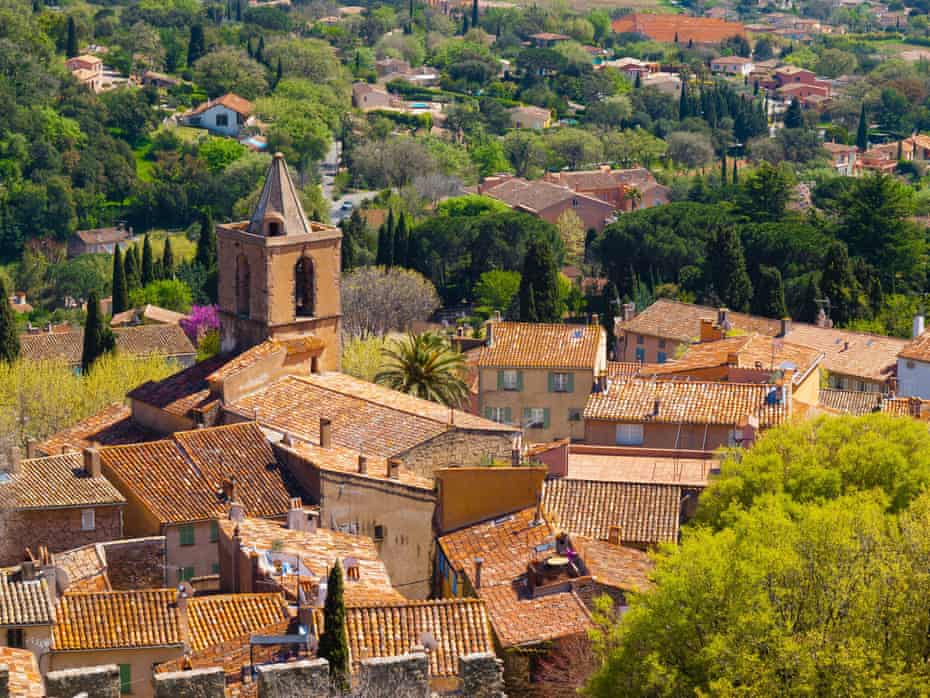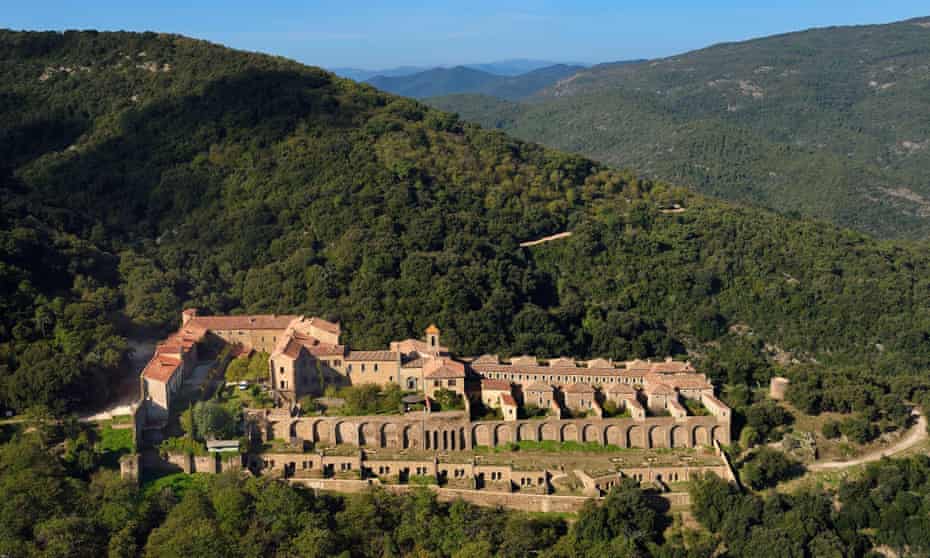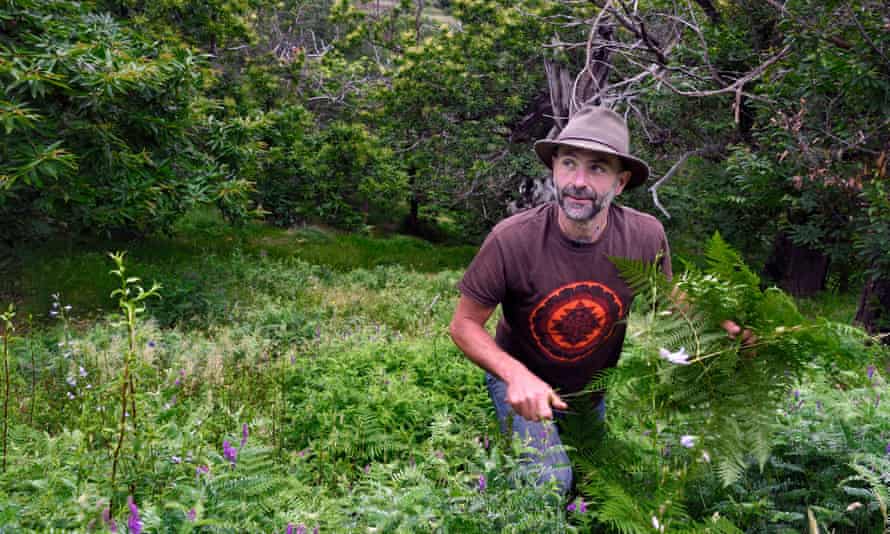It was 8am and as I opened the hotel window to let in the day, the cool autumnal air brought with it the aroma of roasting chestnuts: Collobrières’ festival was under way. I was in the Var, Provence’s most unspoiled department, for the nutty festivities, which take place over the last three Sundays in October.
This rural French knees-up has seen chestnuts being munched in all their guises since 1982, with (in pre-Covid times) about 45,000 visitors descending on Provence’s chestnut capital.
As with many autumn festivals across France – such as Normandy’s apple, cider and cheese festival, the Basque country’s Espelette pepper celebration, and many a grape harvest fete – it’s a chance for locals to don traditional costumes, for bands to ring out ancient tunes and everyone to get merry on the local liqueur.
While chi-chi Saint-Tropez is just an hour away, much of the Var is laid-back, leafy and remote. The Massif des Maures mountains that back on to the Côte d’Azur are made up of the dense cork oak and chestnut forests that sustained the local population for centuries. While the forests were recently ravaged by fires, Collobrières was spared, thankfully, and the festival is going ahead after a break in 2020.
From Saint-Tropez, I drove the first of the winding roads past the town of Grimaud to La Garde-Freinet, a village perched high over the coast where the bric-a-brac shops and galleries sandwiched between family-run restaurants reveal a gentler pace of life than the Riviera. I climbed up to the ruined medieval fort on the hill behind and looked down upon the jumble of terracotta roofs and amber and peach-hued streets.
The next day, the drive into the Maures’ forests was a thrill, the narrow road from Grimaud passing vineyards, where the reddening vines stood on twinkling dew. The road twisted this way and that, giving periodic glimpses through the trees of uninterrupted vistas of steep, forested hills.

Twelve kilometres before reaching Collobrières, I followed signs to the Chartreuse de la Verne, a Carthusian monastery with a remarkable past. It burned down three times in the 13th and 14th centuries and lay in ruins for a few hundred years more, before being restored in the 18th century. Taking the self-guided tour around the huge site, complete with the sparse living quarters where the monks once lived, I learned, too, that the building survived the French Revolution – presumably it was too much hassle to get there to ransack it. Nevertheless, the monks beat a hasty retreat to Italy, abandoning the site to nature. Having been the first people to cultivate chestnuts here, their groves were their legacy. The monastery was finally restored in the mid-20th century and its current residents, the white-cloaked Sisters of Bethlehem, create exquisite painted ceramics with low price-tags.
Though the silence was welcome, I knew the party awaited in Collobrières and when I arrived, the town was filling up with stalls for the weekend’s festivities. After checking into the Hotel Notre-Dame, close to the centre, I went for a wander, strolling uphill on the ochre lanes past bric-a-brac shops and the workshop of the local knife-maker. Further on, I climbed the ruins of the 16th-century Saint-Pons church and looked out at the view of the valley with Collobrières below.

The next morning the town was a-buzz. A whirl of people browsed stalls under the avenue of golden plane trees, braziers crackled as huge pans of chestnuts roasted above the flames and I risked the finger-singeing heat to eat them at their best. Other stalls sold chestnut flour, chestnut cakes, chestnut liqueur and the delectable crème de marron: sweet chestnut purée to carry home and mix into yoghurt or bake into cakes.
Fabien Tambolini, a former forest-worker from the Jura, had a tower of jars of crème de marron on sale. He told me how he took over a small grove in the woods above Collobrières and quadrupled its crop in four years while living in an off-grid cabin nearby. “We only moved into the town from there when our son started school as it was too far to drive each morning.”

While the festival is full of small producers, the biggest business in town is that of the Confiserie Azuréenne, a large family-run factory that makes some of France’s most popular marron glacés – candied chestnuts. They were selling them by the punnet in huge quantities, but I joined the queue on an adjacent stall to order a scoop of its ice-cream: La Véritable Glace de Collobrières aux marrons glacés, a reason to be there in itself.
Soon, the marching bands wearing traditional dress, piped and drummed their way through the town and festivalgoers sat at long tables and devoured the menu du jour. Every restaurant served the same: daube de sanglier – a rustic stew designed to address the local wild boar population’s destruction of the chestnut crop.

I saved the stew for later with dinner at the Hotel des Maures; the hotel-restaurant is the town’s most revered establishment, run by the same family since 1886. The bar was full of locals who partied long into the evening and they were keen to share a toast of chestnut liqueur topped up with champagne. As I sipped it back in the surrounds of the bright and jolly bar, I discovered the best way to enjoy the local crop: sweet, rustic and with a touch of Riviera glamour.
Collobrières’ chestnut festival takes place on 17, 24 and 31 October 2021. For more information see mpmtourisme.com. To enter the festival area you will need to show the pass sanitaire. Stay at Hotel Notre Dame in Collobrières (doubles from €85, room only). If visiting La Garde-Freinet, Villa Fontane reopens in the spring (doubles from €100 B&B)
 Top Naija News – Nigeria News, Nigerian News & Top Stories Top Naija News – Nigerian Newspapers, Nigerian News. topnaijanews is a daily Nigerian newspaper covering Latest News, Breaking News, Entertainment, Sports, Lifestyle and Politics.
Top Naija News – Nigeria News, Nigerian News & Top Stories Top Naija News – Nigerian Newspapers, Nigerian News. topnaijanews is a daily Nigerian newspaper covering Latest News, Breaking News, Entertainment, Sports, Lifestyle and Politics.



